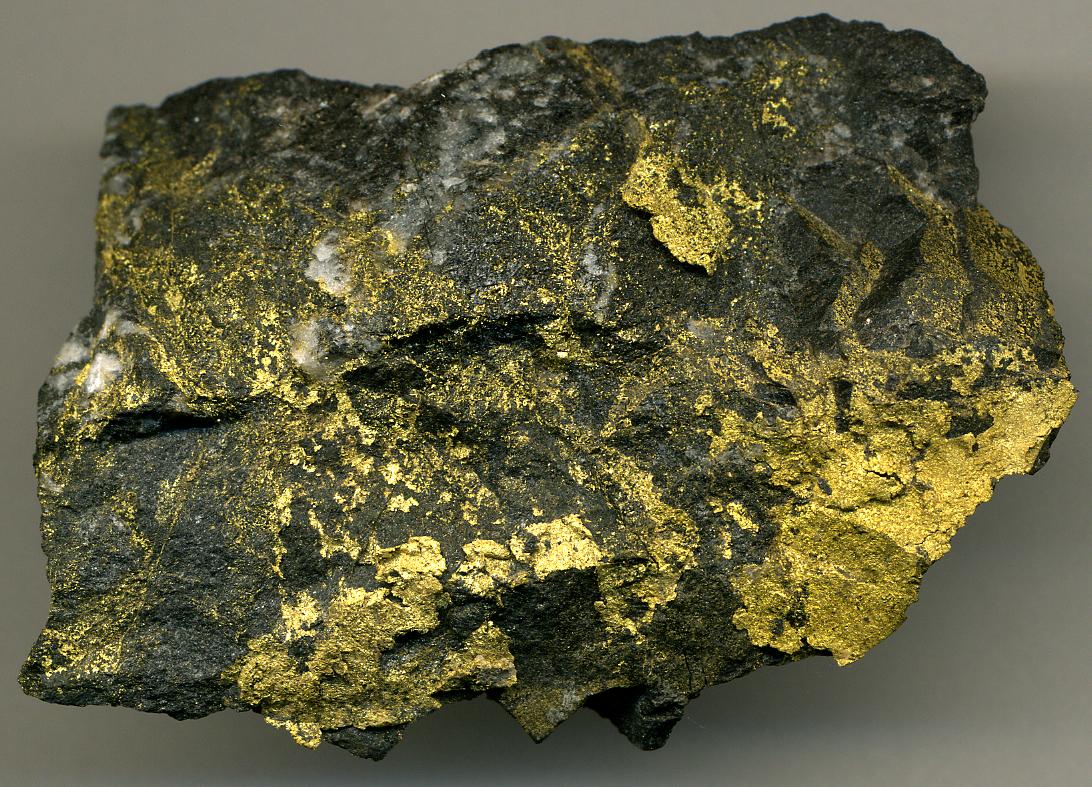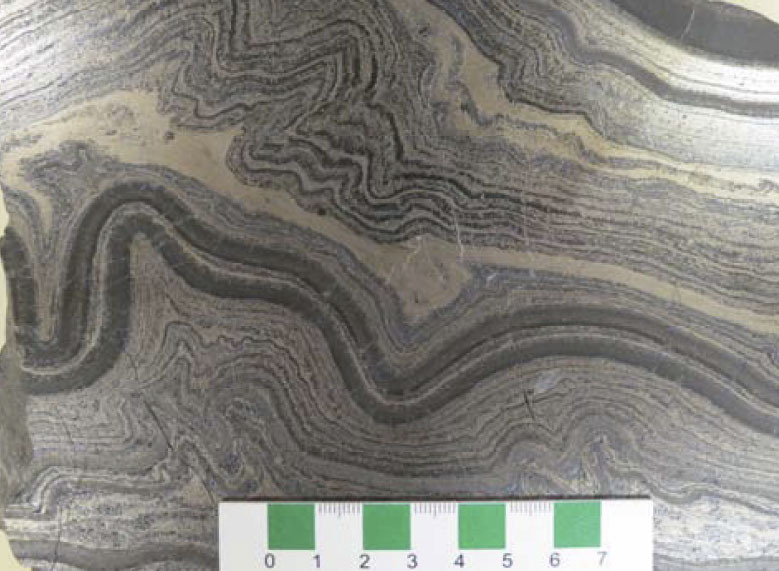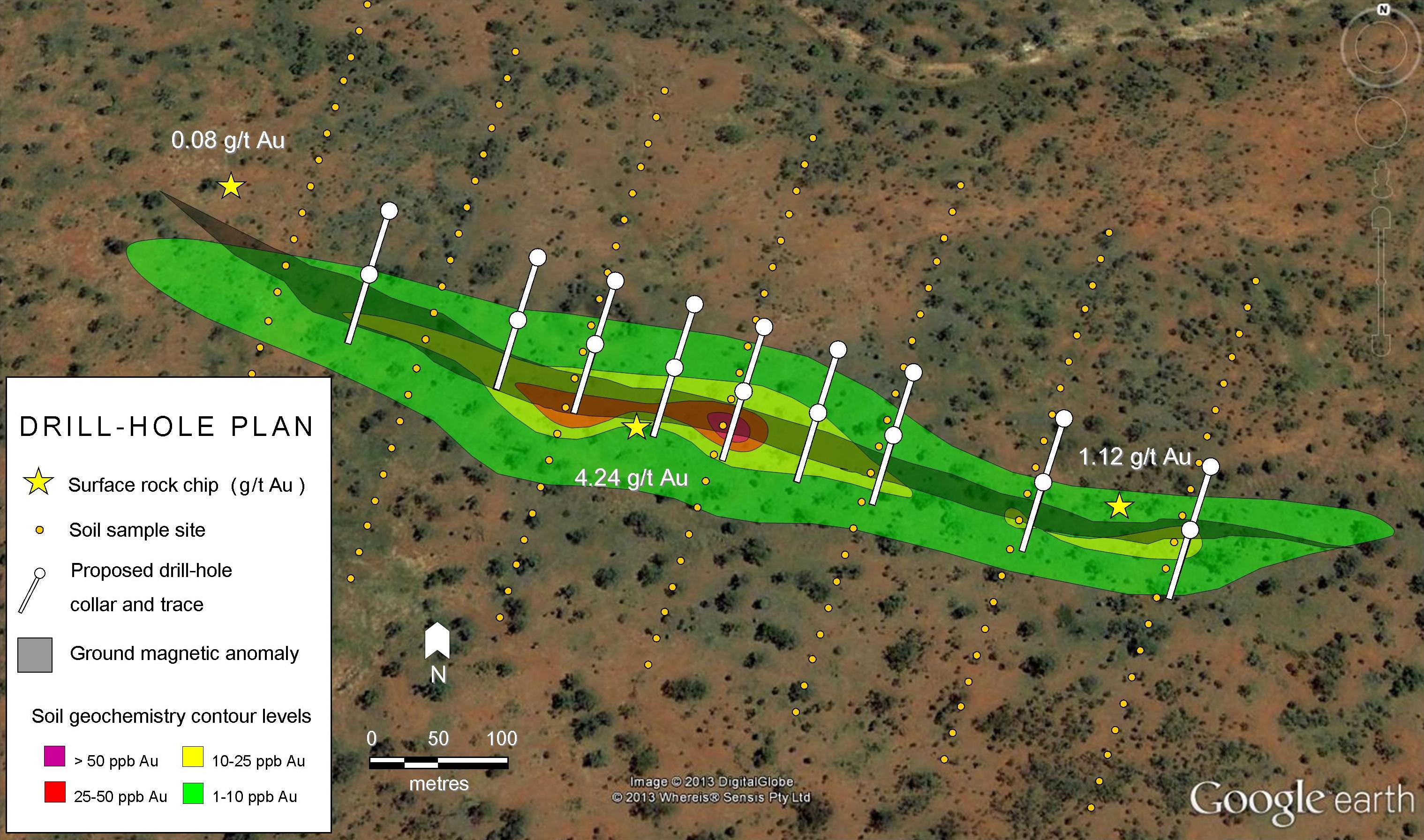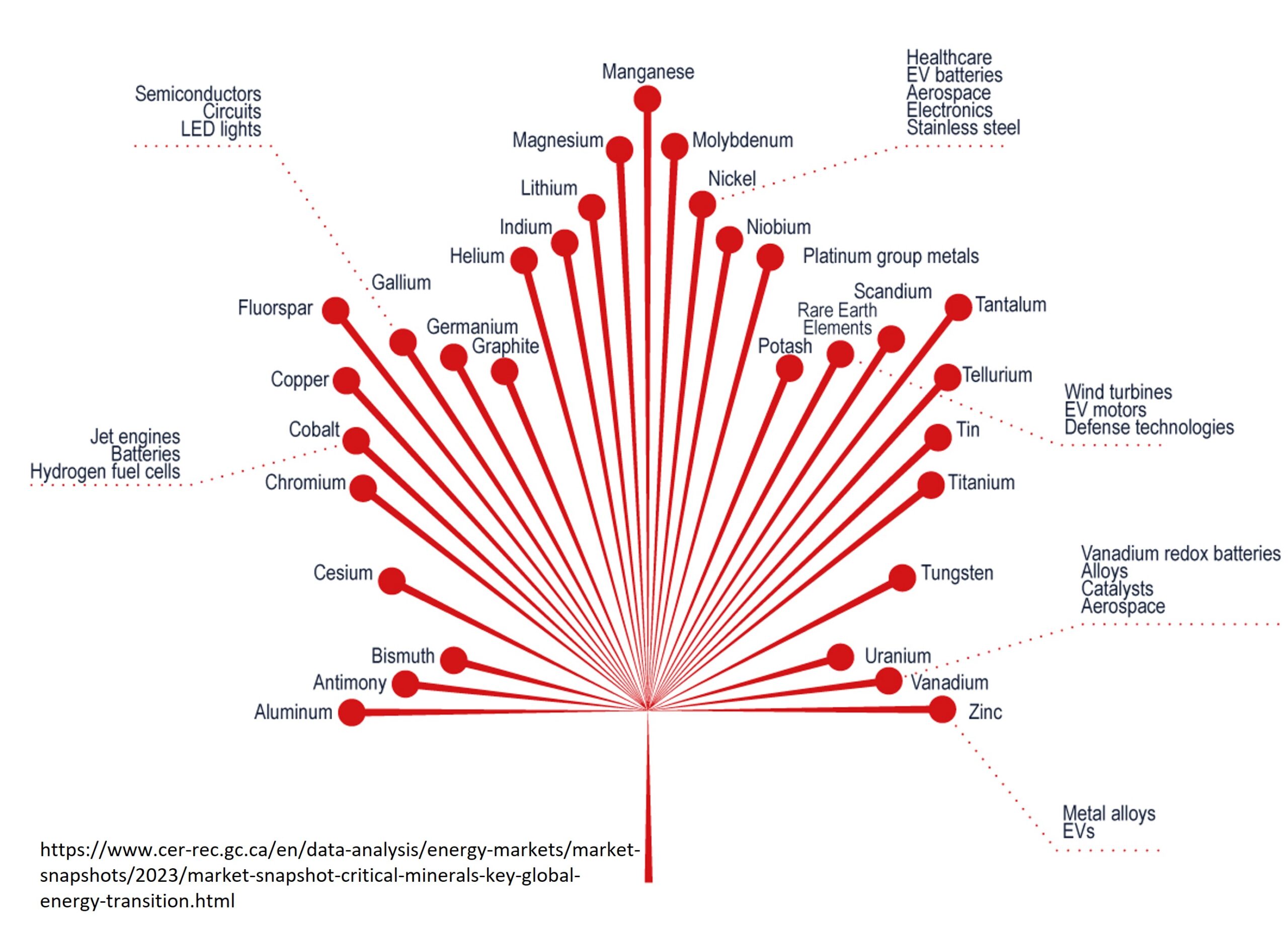While the tonnage estimates can arguably be ignored for now, these additional sites are significant exploration targets based on the fact that they are known to contain diamonds.
[box type=”info” align=”aligncenter” ]Disclaimer: This is an editorial review of a public mining company press release and is not an endorsement. It may include opinions or points of view that may not be shared by the companies mentioned in the release. The editorial comments are highlighted so as to be easily separated from the release text and portions of the release not affecting this review may be deleted. Read more at How to Use this Site.[/box]
VANCOUVER, BRITISH COLUMBIA–(May 7, 2014) – Peregrine Diamonds Ltd. (“Peregrine” or “the Company”) (TSX:PGD) is pleased to announce estimates for a maiden independent Canadian National Instrument (“NI”) 43-101-compliant Inferred Mineral Resource for the top 250 metres of the CH-6 kimberlite pipe and additional tonnage as a target for further exploration. Key elements of the CH-6 estimates are:
- An Inferred Mineral Resource of 7.47 million carats of diamonds in 2.89 million tonnes of kimberlite to a depth of 250 metres
- Grade of 2.58 carats per tonne
- An average diamond price of US$213 per carat and a modelled price range between US$163 and US$236 per carat as determined by WWW International Diamond Consultants in February 2014
- An estimate of 2.60 to 3.47 million tonnes of kimberlite classified as a target for further exploration
- The kimberlite is open at depth
[box type=”note” align=”aligncenter” ]
As of writing and with this news, Peregrine’s stock has shot up more than 24% from $0.41 to $0.51. Far off their one year high of almost $0.80, but not a bad bump. For the unfamiliar, Peregrine Diamonds is a junior exploration company whose primary focus is its Chidliak Project in Nunavut, Canada. You can read of of our previous coverage of Peregrine Diamonds.
It’s not easy getting a stock to move in this market. In fact, much of the news put out by the junior mining companies seems to do absolutely nothing these days. Is it worth getting excited over this? Let’s take a look.
When we last talked about PGD in March, they had received their valuation on the CH-6 kimberlite bulk sample and had already published the grade of 2.58 carats per tonne. So nothing new there. The only thing missing from previous reports was the overall tonnage and the filing of a 43-101 compliant resource. With this news they have announced that an an Inferred Resource has been defined for a portion of the CH-6 pipe. Resources are typically defined for the portion of a deposit where there is significant data available. As exploration continues, additional resources can be added or current resources expanded. In this case the company is reporting for the top 250 meters of a single diamond-bearing kimberlite pipe. While not insignificant, it’s worth reminding ourselves that Inferred Resources represent the lowest level of confidence in resource reporting.
The remainder of the news release, and arguably more significant are the “tonnage estimates” for the other kimberlite pipes (CH-7 and CH-44) and the expanded target estimates for other portions of CH-6.
[/box]
Tonnage estimates have been completed for the CH-7 and CH-44 kimberlites. The CH-7 kimberlite tonnage estimate is between 2.75 and 3.97 million tonnes from surface to a depth of 280 metres. The CH-44 tonnage estimate is between 1.16 and 2.05 million tonnes from surface to a depth of 230 metres. Both CH-7 and CH-44 are open at depth.
The tonnage estimates that have been identified at CH-6, CH-7 and CH-44 are classified as targets for further exploration and are conceptual in nature. There has been insufficient exploration to define a mineral resource on those targets and it is uncertain if further exploration will result in the tonnage estimates being delineated as a mineral resource.
The CH-6, CH-7 and CH-44 kimberlite pipes are located on Peregrine’s 100 percent-owned Chidliak project (“Chidliak”), 120 kilometres from Iqaluit, the capital of Nunavut, Canada.
Geostrat Consulting Services Inc. (“Geostrat”), a consulting firm specializing in geological modelling and resource evaluation for diamonds and other commodities, prepared the CH-6 Inferred Resource estimate and verified the tonnage estimates for CH-6, CH-7 and CH-44. A detailed technical report, prepared in accordance with NI 43-101 will provide more details on this work and will be available within 45 days on SEDAR and the Company’s website.
[box type=”note” align=”aligncenter” ]
While its easy to get excited about these “targets” it is important to note that these estimates are NOT compliant resources. They represent significant exploration targets, but beyond that nothing should be assumed. That said, they ARE significant exploration targets.
[/box]
CH-6 INFERRED RESOURCE and ADDITIONAL TONNAGE ESTIMATE
The CH-6 kimberlite has a surface expression of approximately one hectare and is open at depth. The Inferred Mineral Resource estimate was determined by integrating kimberlite volumes with density, petrology and diamond content data utilizing a geological model prepared by Peregrine personnel and reviewed by Geostrat. Size frequency analyses of diamond results from the 2013 bulk sample and caustic fusion diamond results from drill core were undertaken to confirm the continuity of mineralization and the consistency of the diamond population throughout the kimberlite.
NI 43-101 standards and Canadian Institute of Mining and Metallurgy guidelines stipulate that a Mineral Resource needs to have a “reasonable prospect of economic extraction”. In assessing whether the CH-6 Inferred Resource met this standard, Geostrat considered publicly available costs from northern Canadian diamond projects relative to the total estimated in-situ value of the CH-6 Mineral Resource and concluded that there was a reasonable prospect of economic extraction.
[box type=”note” align=”aligncenter” ]
Since grades are so low for diamond deposits (a carat is only 0.2 grams and most deposits are less than 3 carats per tonne), very large bulk samples are required for making resource estimations. Drilling and “mini-bulk samples” can help determine if a kimberlite contains diamonds and if the initial grade warrants a large sample, but ultimately a bulk sample of several hundred tonnes will be required. As was done for the top portion of CH-6, the bulk sample will be need to analysed and a preliminary revenue model developed based on independent market evaluation. You can read more in our article about Diamond Exploration.
[/box]
In addition to the 2.89 million tonne Inferred Resource, an additional 2.60 to 3.47 million tonnes of kimberlite has been estimated at CH-6, with 1.47-1.53 million tonnes above 250 metres depth. The following table summarizes the tonnage that has been estimated at CH-6.
CH-6 ADDITIONAL TONNAGE ESTIMATES
| DEPTH BELOW SURFACE (m) |
ESTIMATED TONNAGE RANGE (million tonnes) |
||
| LOW | HIGH | ||
| 105-250 | 1.47 | 1.53 | |
| 250-380 | 1.13 | 1.94 | |
| Totals | 105-380 | 2.60 | 3.47 |
Peregrine is currently planning a core drilling program at CH-6 in an effort to convert the tonnage estimate into an Inferred Resource.
CH-7 AND CH-44 INITIAL TONNAGE ESTIMATES
Initial tonnage estimates were determined from geological models of the CH-7 and CH-44 kimberlites prepared by Peregrine personnel and verified by Geostrat. The estimates are presented in the following table. Both kimberlites are open at depth.
CH-7 and CH-44 TONNAGE ESTIMATES
| DEPTH BELOW SURFACE (m) |
ESTIMATED TONNAGE RANGE (million tonnes) |
||
| KIMBERLITE | LOW | HIGH | |
| CH-7 | 0-280 | 2.75 | 3.97 |
| CH-44 | 0-230 | 1.16 | 2.05 |
The CH-7 kimberlite, located approximately 15 kilometres southeast of CH-6, has a surface expression of approximately one hectare. The 2.75 million tonnes estimated to 160 metres below surface is considered reasonably defined with good drilling support. The 1.22 million tonnes estimated from 160 to 280 metres below surface has been identified with limited drilling support and the confidence level will increase with more drilling. As reported on November 22, 2010, a 47 tonne mini-bulk sample collected from the surface of CH-7 returned a grade of 1.04 carats per tonne.
The CH-44 kimberlite, located approximately 17 kilometres southeast of CH-6, has a surface expression of approximately 0.5 hectare. The 1.16 million tonnes estimated to 120 metres below surface is considered reasonably defined with good drilling support. The 884,000 tonnes estimated from 120 to 230 metres below surface has been identified with limited drilling support and the confidence level will increase with more drilling. As reported on November 21, 2011, caustic fusion diamond results from 535 kilograms of drill core collected to date are encouraging, and CH-44 is currently a target for future bulk sampling.
New caustic fusion diamond results from the CH-7 and CH-44 kimberlites will be reported this quarter.
[box type=”note” align=”aligncenter” ]
Of the three exploration targets, CH-6 is the strongest candidate with an established grade and bulk sample. Expanding it shouldn’t be terribly difficult or surprising.
CH-7 was “mini” bulk sampled and produced a grade of 1.04 cpt over 47 tonnes. This is not an especially exciting grade and is only significant if it gets factored into a larger scale high grade mine project.
CH-44 has had least amount of work done. At this point they have only sampled a few hundred kg of material and determined that the kimberlite contains diamonds. Based on so little work they really shouldn’t be reporting a tonnage estimate for this kimberlite.
So why are these “significant” exploration targets? Quite simply because they all are known to contain diamonds.
[/box]
Mr. Alan O’Connor, Professional Geologist, Peregrine’s Program Manager, Resource Evaluation, is a Qualified Person under National Instrument 43-101 and was responsible for the design and conduct of the CH-6 bulk sampling program carried out by the Company at Chidliak in 2013. Mr. David Farrow and Ms. Darrell Farrow of Geostrat Consulting Services Inc., both Professional Geologists and independent, external Qualified Persons and consultants to Peregrine, prepared the CH-6 Inferred Resource estimate and reviewed and verified the CH-6 tonnage estimate and CH-7 and CH-44 tonnage estimates. Ms. Catherine Fitzgerald, Peregrine’s Project Geologist, Resource Definition, and Dr. Jennifer Pell, Peregrine’s Chief Geoscientist, both Professional Geologists, were responsible for preparing the CH-6, CH-7 and CH-44 geologic models.
Mr. O’Connor, Mr. Farrow, Ms. Farrow, Dr. Pell and Ms. Fitzgerald have reviewed this release and approve of its contents.
ABOUT PEREGRINE DIAMONDS
Peregrine is a diamond exploration and development company focused on Canada’s North. The Company has discovered two new diamond districts in Nunavut, Nanuq in 2007 and Chidliak in 2008. At its 100 percent-owned Chidliak project, located 120 kilometres from Iqaluit, the capital of Nunavut, 67 kimberlites have been discovered to date with seven being potentially economic. An Inferred Mineral Resource of 7.47 million carats in 2.89 million tonnes of kimberlite has been defined at the CH-6 kimberlite. In April 2013, Peregrine collected a bulk sample weighing 404.2 dry tonnes from CH-6. This sample returned a grade of 2.58 carats per tonne for diamonds larger than the 1.18 mm sieve size. An independent diamond valuation of the resulting 1,013 carat parcel of diamonds returned an average market price of US$213 per carat and modelled prices that ranged from a minimum of US$162 per carat to a high of US$236 per carat with a base model price of US$188 per carat. The 2014 exploration program has commenced and planning is now underway for an important 2015 resource definition program that will be designed to advance Chidliak to the feasibility stage.
[box type=”note” align=”aligncenter” ]
As we’ve discussed before, the biggest challenge for Peregrine in developing Chidliak is its remote location. Located on Baffin Island in the high Arctic, Chidliak makes the Diavik mine in the Northwest Territories look like a reasonable commute. Of course, the development of remote mineral deposits are not without precedent, but the grade will have to be significant.
Once the project advances to feasibility, investors will have a real idea of the true economic potential.
[/box]
At its 72 percent-owned, nine hectare DO-27 kimberlite in the Northwest Territories, located 27 kilometres from the Diavik Diamond Mine, a NI 43-101-compliant mineral resource of 18.2 million carats of diamonds in 19.5 million tonnes of kimberlite at a grade of 0.94 carats per tonne, which is open at depth, was confirmed in 2008. Peregrine also continues to evaluate earlier stage diamond exploration projects it controls in Nunavut and the Northwest Territories and through comprehensive evaluation of its extensive and proprietary diamond exploration databases, is working towards discovering additional new diamond districts in North America. A key asset being utilized in Peregrine’s search for a new Canadian diamond district is a proprietary database acquired from BHP Billiton that contains data from approximately 38,000 kimberlite indicator mineral samples covering approximately three million square kilometres of Canada.
[box type=”success” align=”aligncenter” ]Have a company or release you’d like us to look at? Let us know though our contact page, through Google+, Twitter or Facebook.[/box]






